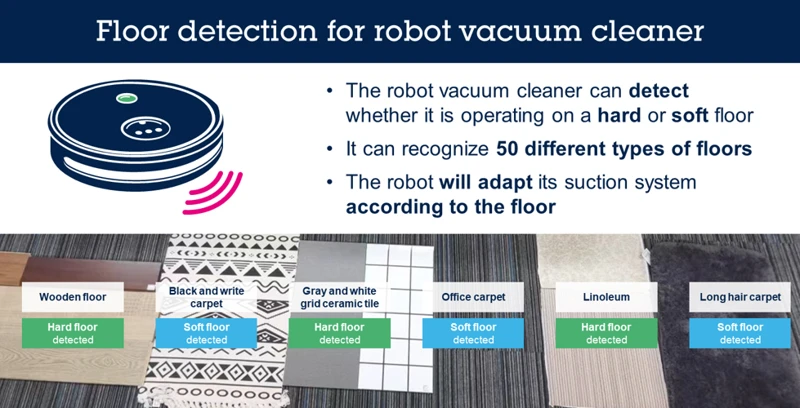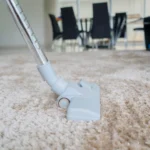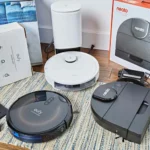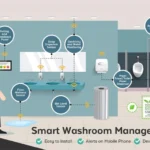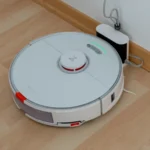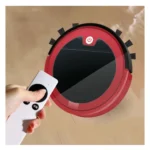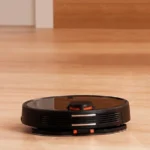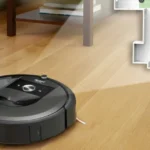Have you ever wondered how multi-floor robot vacuum cleaners can adapt to different floor types with ease? These ingenious gadgets use a myriad of advanced technologies to ensure that your floors remain spotless regardless of the floor type. From sensors and mapping to suction issues, these robots are specifically designed to tackle any challenge that comes their way. In this article, we’ll delve into the nitty-gritty of how these robots operate, and how they can effectively handle different flooring types. So sit back, and let’s explore the fascinating world of multi-floor robot vacuum cleaners!
How Multi-Floor Robot Vacuum Cleaners Work

Multi-floor robot vacuum cleaners have become increasingly popular in recent years thanks to their convenience and unique features. These autonomous cleaners offer hands-free cleaning by navigating around your home and cleaning all types of flooring, from hardwood to carpeting. But how do they work? Let’s delve into the inner workings and explore the key features that make these devices stand out. By the end of this article, you’ll have a better understanding of what to look for when choosing the best multi-floor robot vacuum for your home. But before we get to that, let’s explore how these devices work.
Sensors and Mapping
Multi-floor robot vacuum cleaners use various sensors and mapping technologies to navigate and adapt to different floors. These technologies enable the robot vacuum cleaners to move around a room and map it by detecting obstacles, such as furniture or walls, and measuring distances between them. This information is stored and used to create a virtual map that the robot can use for efficient cleaning.
The Different Types of Sensors Used in Multi-Floor Robot Vacuum Cleaners
| Sensor Type | Description |
|---|---|
| Optical Sensors | These sensors use light to detect the edges of a room or obstacle. They are useful for mapping a room and preventing the vacuum cleaner from falling off stairs. |
| Infrared Sensors | These sensors detect obstacles in a robot vacuum cleaner’s path, such as furniture or walls. They are also useful for detecting ledges or sudden changes in flooring elevation. |
| Ultrasonic Sensors | These sensors use sound waves to detect obstacles in the path of the robot vacuum cleaner. They are useful for mapping the layout of the room and preventing collisions or damage to furniture. |
| Cliff or Bumper Sensors | These sensors are used to detect steep drop-offs or ledges in a robot vacuum cleaner’s path. They prevent the vacuum cleaner from falling off stairs or steep inclines. |
Mapping and Navigation Technology
Multi-floor robot vacuum cleaners use mapping and navigation technology to create an efficient cleaning path. The robot vacuum cleaner uses its sensors to map the room and create a virtual map of its layout. This map is then used to calculate the most efficient cleaning path. Once the robot has started cleaning, it uses its sensors to detect changes in the room’s layout and adapt its cleaning path accordingly.
One popular mapping and navigation technology used in multi-floor robot vacuum cleaners is simultaneous localization and mapping (SLAM). SLAM enables the robot vacuum cleaner to create a map of its surroundings while simultaneously tracking its own position. This technology allows the robot to accurately map the room and navigate around furniture and other obstacles.
To learn more about the benefits of using a multi-floor robot vacuum cleaner, check out our guide to multi-floor robot vacuum cleaner benefits.
Battery Life and Recharge Mechanism
One of the keys to efficient and effective cleaning is battery life and a reliable recharge mechanism. Multi-floor robot vacuum cleaners come with rechargeable batteries that power the machine’s functions. The length of the battery life depends on factors such as the power of the battery itself and the amount of cleaning the robot vacuum does. While high-end models may have longer battery life, less expensive models may have shorter battery life, so it’s important to choose a robot vacuum that can clean a decent area on a single charge.
When the vacuum’s battery starts running low, it will hopefully return to its charging station to recharge and be ready to clean again. However, some less expensive models of robot vacuums may have trouble returning to their charging station, leaving them stranded without enough power to finish a cleaning cycle. One way to prevent this is to place the vacuum’s charging station in a central location, where the robot can quickly and easily return to it.
Another important component of the recharge mechanism is the charging time. Ideally, a robot vacuum’s charging station will fully recharge the battery in a short amount of time. Some models can recharge in just an hour or two, while others may take several hours to charge fully. Additionally, check the charging station to see if it has any alerts or notifications that will let you know when the battery is running low or when the robot vacuum needs maintenance.
It’s important to note that battery life will decrease over time with regular use, and some models may need a replacement battery at some point. Careful maintenance and charging habits can help prolong the life of the battery, but in the end, every battery will need replacing. It’s also important to choose the right type of battery for your robot vacuum when it comes time for a replacement.
A long battery life and reliable recharge mechanism are vital components of a successful multi-floor robot vacuum cleaner. To learn more about the top features of these amazing cleaners and explore the best options on the market, check out our guide to the best multi-floor robots. For tips on taking care of your multi-floor robot vacuum and keeping it running smoothly, visit our page of care tips.
Adapting to Different Flooring Types
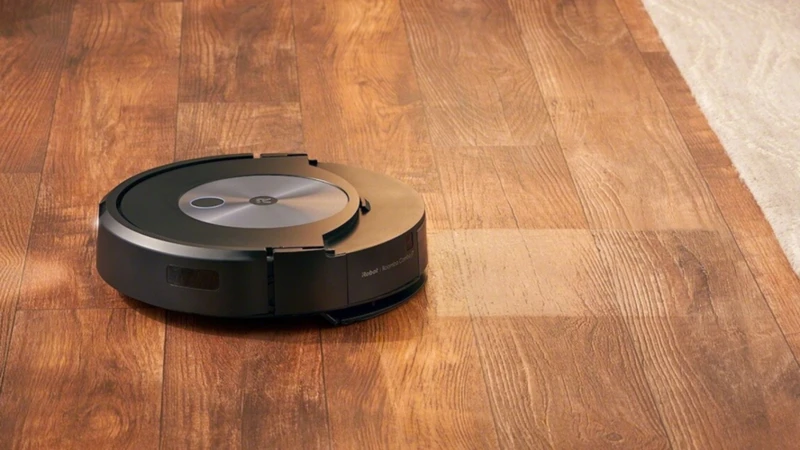
When it comes to keeping your floors tidy, one of the most helpful tools is a multi-floor robot vacuum cleaner. These small machines are designed to navigate through different rooms and flooring styles with ease, but how exactly do they adapt to each surface? Let’s dive into the details and explore the technologies and mechanisms that make multi-floor robot vacuums so efficient. Before we talk about how they adapt, let’s first cover how they generally work. (For more information on this topic, check out our article on the top features of multi-floor robot vacuums.)
Hardwood Flooring
Robot vacuum cleaners are ideal for cleaning hardwood floors and they come with features that make them perfect for cleaning without damaging your flooring. Multi-floor robot vacuums are equipped with different sensors to navigate around your home, preventing collision and maintaining an efficient cleaning path.
Hardwood floors are vulnerable to fine dust, pet hair, and debris that can scratch or damage the surface. Many multi-floor robot vacuums come with strong suction and brush options that help them remove debris without leaving scratches. Additionally, some robots have washable filters that keep the dust and dirt trapped in them while the suction power prevents the dirt and dust from escaping back onto the floor.
One example of a multi-floor vacuum ideal for hardwood is the iRobot Roomba 675. This robot features multi-surface brushes that allow it to pick up dirt and debris from any surface. The robot is engineered to adjust the height of the brushes, allowing them to closely clean rugs or carpets and hardwood floors. Additionally, this vacuum can run for up to 90 minutes and automatically recharges itself when the battery runs low.
Many robot vacuums, including the Roomba 675, feature dirt detection sensors that help them locate dirtiest areas and focus on them. This intensity cleaning allows the robot vacuum to focus on high-traffic areas where debris and dirt are often prevalent.
Another great vacuum for hardwood floors is the Eufy Robovac 11S MAX. This slim model of robot vacuum often features strong suction, making it perfect for picking up deep-down dirt and debris. This robot is also engineered to maneuver around tight, hard-to-reach corners, ensuring every part of the room is cleaned. You can also schedule cleaning sessions with Eufy, making sure it cleans the house whenever you’re not at home.
Multi-floor robot vacuums are designed to clean any floor type, including hardwood floors. These vacuums come with specific features that make cleaning efficient, such as adjustable brushes, dirt detection sensors, and strong suction. If you own a robot vacuum, it is important to follow best practices like ensuring good charging habits, emptying dustbins frequently, and using smart home integration to streamline the process. Whether you are looking for an iRobot or Eufy model or other popular vacuum robots, ensure the robot vacuum cleaner you choose is equipped with the features required to effectively clean your hardwood floors.
Carpeting
Carpeting presents a unique set of challenges for multi-floor robot vacuum cleaners. Here are some key factors to consider when using robot vacuums on carpeted floors:
- Brush Roll: A robot vacuum cleaner with a powerful brush roll is essential for cleaning carpeted floors. The brush roll helps to agitate and pick up dirt and debris from the carpet fibers. Some robot vacuums come with specialized brush rolls designed to work specifically on carpeted floors.
- Suction Power: In addition to a powerful brush roll, a robot vacuum cleaner also needs strong suction power to effectively clean carpets. The suction power helps to pull dirt and debris from deep within the carpet fibers. Look for robot vacuums with adjustable suction power settings to optimize cleaning performance on carpets.
- Height Adjustment: A robot vacuum cleaner with adjustable height settings can more effectively clean carpets of different heights. Lower the height on plush carpets to ensure the brush roll can better penetrate the fibers and remove dirt and debris.
- Navigation: Robot vacuums need to be able to navigate around carpeted areas without getting stuck. Look for robot vacuums with advanced mapping capabilities and obstacle detection to prevent the vacuum from getting caught on carpet fringes, tassels, or corners.
When it comes to cleaning carpets with a multi-floor robot vacuum cleaner, it’s essential to choose a model with powerful suction, adjustable brush roll, and height settings, and advanced navigation capabilities. One of the most popular options on the market today is the Roomba i7+, which boasts powerful suction, a specialized carpet boost mode, adjustable height settings, and advanced navigation capabilities. For more information on popular robot vacuum cleaners, check out our comprehensive guide to popular vacuum robots.
Tile Flooring
Tile flooring is a popular choice for many households due to its durability and easy maintenance. Multi-floor robot vacuum cleaners have adapted to clean tile flooring effectively.
Sensors: Tile flooring presents less challenge to vacuum cleaners as compared to carpets, and thus robot vacuum cleaners can easily navigate on it. Sensors on these robotic vacuum cleaners can detect dirt and debris on tile flooring, from small crumbs to larger particles. They use infrared and optical sensors to detect obstacles and avoid knocking them.
Cleaning Patterns: Most tile flooring has a smoother surface than carpets, so robot vacuum cleaners usually follow a straight-line pattern while cleaning. They also have algorithms that help them navigate through an entire room systematically, avoiding spots they have previously cleaned.
Suction: Robot vacuum cleaners have powerful suction to remove dirt, debris, and pet hair from tile floors. They can remove dust and debris from grout lines effectively, which can be difficult to clean manually.
Brushes: Some robot vacuum cleaners come with specialized brushes that can clean grout lines more thoroughly, ensuring that dirt and debris does not accumulate in these tight spaces.
Maintenance: It is essential to keep robot vacuum cleaners maintained to maximize their efficiency. Devices with detachable brushes and filters make cleaning and maintaining them easier. You should also empty the dustbin after every use, so the vacuum’s sensors can work correctly.
To summarize, robot vacuum cleaners can clean tile flooring effectively. They use sensors to detect dirt, debris, and obstacles while navigating, and their powerful suction can remove any unwanted particles from your tile floor. Additionally, their cleaning patterns are systematic and efficient, making them an ideal cleaning solution for households with tile flooring.
Laminate Flooring
Laminate flooring is a popular choice for households due to its durability and affordability. However, it can pose a challenge for robot vacuum cleaners as it tends to accumulate dust and debris in the grooves. Here’s how multi-floor robot vacuum cleaners adapt to clean laminate flooring:
| Challenge | Solution |
|---|---|
| Difficulty with suction | Robot vacuum cleaners with strong suction power can easily navigate through the grooves to clean the floor. Look for models with higher wattage and stronger motors to effectively clean laminate flooring. |
| Risk of scratches | Most robot vacuum cleaners have rubber wheels that minimize the risk of leaving scratches on laminate flooring. However, it’s still important to check the manufacturer’s instructions and care recommendations for your particular model to avoid any damage to your floors. |
| Noise level | Robot vacuum cleaners can be noisy on smooth surfaces like laminate flooring. To minimize noise, look for models with adjustable suction power or scheduling options to run at more convenient times. |
Tips: Keep clutter off the floor to ensure proper cleaning, and avoid using harsh chemicals that can damage the laminate flooring. With the right vacuum cleaner and care, laminate flooring can be efficiently cleaned by multi-floor robot vacuums.
Challenges Faced by Robot Vacuum Cleaners
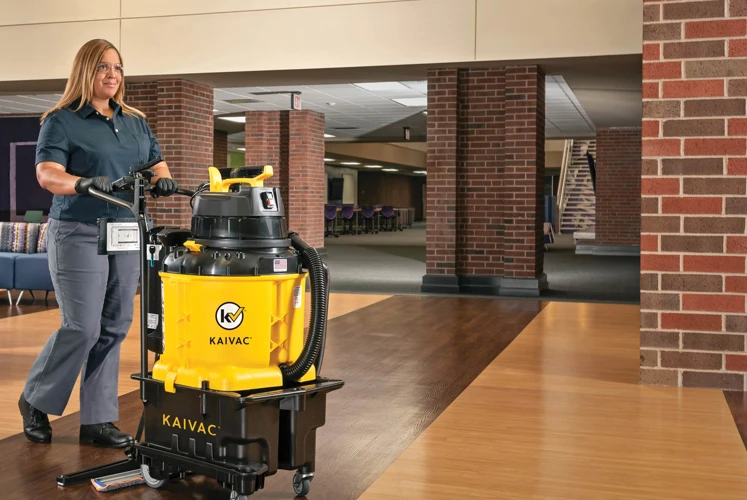
As much as multi-floor robot vacuum cleaners have revolutionized home cleaning and provided ease and convenience, they are not without their challenges. These machines, though sophisticated and intelligent, have specific limitations and face different difficulties in their bid to keep your floors clean. From coping with clutter and obstacles to dealing with suction issues and filter maintenance, the challenges of robot vacuum cleaners are vast and various. Let’s delve into some of these challenges and how they can be overcome to ensure your robot vacuum cleaner continues to function at its best.
Coping with Clutter and Obstacles
One of the biggest challenges faced by multi-floor robot vacuum cleaners is coping with clutter and obstacles that are strewn across the floor. While some models of robot vacuums come equipped with advanced mapping and obstacle detection technology, others may still struggle with this issue.
1. Debris: Clutter and debris, such as toys, cables, and books can obstruct the robot vacuum’s path and affect its cleaning efficiency. To avoid these obstacles, it is highly recommended to tidy up the floor before running the vacuum. Make sure items are put away in their designated places so that the robot vacuum can navigate the floor without getting stuck.
2. Pets: Pets can also pose an obstruction to robot vacuums. Just like humans, pets move around and leave toys and hair all over the floor. This can cause a problem for robot vacuums as they may get tangled up in pet hair or bump into pet toys. To avoid this, it is suggested to clean up pet hair and toys before running the robot vacuum.
3. Furniture: Large pieces of furniture pose a challenge to robot vacuums as well. Some robot vacuums may try to navigate around the furniture and leave large areas uncleaned, while others may get stuck or cause damage to the furniture. To avoid this issue, it is recommended to move furniture to a different location or to use boundary strips to guide the vacuum around the furniture.
4. Rugs: Rugs and mats can also pose a challenge to robot vacuums. Some models may confuse a dark-colored rug with a hole in the floor and avoid cleaning it, while others may get stuck on the fringes of a rug. To avoid this issue, it is recommended to use boundary strips to guide the robot vacuum around the rug.
5. Stairs: Stairs are probably the biggest obstacle that any robot vacuum faces. These devices can easily fall down the stairs and cause damage to themselves and the surroundings. To avoid this issue, it is important to place the robot vacuum on the right floor level and not allow it to roam while unsupervised.
Multi-floor robot vacuums face various challenges while cleaning different types of flooring. Coping with clutter and obstacles is one of the biggest challenges, but with a little effort, it is easy to overcome these issues. Remain cautious, take precautions, and clean up before running the robot vacuum to ensure the best cleaning results.
Suction Issues
One of the key challenges faced by multi-floor robot vacuum cleaners is suction issues. The suction power is important for effective cleaning, as it ensures that the vacuum picks up dirt, dust, and debris from all floor types. However, various factors can affect the suction power of the robot vacuum cleaner.
Here are some of the major suction issues that can arise with multi-floor robot vacuum cleaners:
| Suction Issue | Cause | Solution |
|---|---|---|
| Clogged Filters | If the vacuum filters are clogged with dirt and debris, the suction power will decrease, and the robot may not perform effectively. | Clean or replace the filters regularly, as per manufacturer recommendations. |
| Poor Brush Maintenance | The robot vacuum’s brush is a vital component of its cleaning system. If it is not kept clean and unclogged, it can reduce suction power and reduce the vacuum’s efficiency. | Clean the brush roll and remove tangled hair or debris often. |
| Worn Out Parts | Over time, the vacuum’s components can wear out, such as the brush roll or the suction motor. This can lead to reduced suction power, uneven cleaning, and other issues. | Replace worn-out parts as needed, as per manufacturer recommendations. |
| Weak Batteries | If the vacuum’s batteries are weak, it will not generate enough power to sustain strong suction. | Replace the batteries as per manufacturer recommendations or recharge the batteries regularly for optimal performance. |
It’s important to note that suction issues can arise not only from poor maintenance or faulty components, but also from the design of the vacuum itself. It’s essential to choose a multi-floor robot vacuum cleaner that has a strong motor and effective components for maintaining suction power.
Suction issues are a common challenge faced by multi-floor robot vacuum cleaners. By understanding their causes and solutions, you can ensure that your robot vacuum cleaner retains its suction power and continues to clean effectively.
Filter Maintenance and Replacement
Multi-floor robot vacuum cleaners are an excellent investment that can make cleaning much more efficient and effortless. Not only do they eliminate the need for manual vacuuming, but they can also adjust to different flooring types. However, proper maintenance is essential to ensure these devices continue to work optimally, particularly when it comes to filter maintenance and replacement.
Filters are critical in ensuring clean air quality while using a robot vacuum cleaner. They trap dirt, debris, and other pollutants inside the device, preventing them from being released back into the air. This function is particularly important for people with allergies or respiratory illnesses.
Different types of filters are available, including HEPA filters that capture even the smallest particles, and foam filters that are washable and reusable. However, regardless of the type of filter, regular maintenance is necessary to keep them functioning efficiently.
In general, filters should be cleaned or replaced every 2-3 months, but this may vary depending on usage frequency and the type of filter. A dirty or clogged filter will reduce suction power, make the device run louder, and potentially impact the air quality of the room. It is essential to check the filter regularly and replace it when necessary.
Using an HTML table, here are some maintenance and replacement tips that can help keep robot vacuum cleaners in good condition:
| Filter Type | Maintenance | Replacement |
|---|---|---|
| HEPA Filter | Clean or replace every 2-3 months | Replace every 6-12 months, depending on usage and manufacturer recommendation |
| Foam Filter | Wash and dry every 2-3 months | Replace every 6-12 months, depending on usage and manufacturer recommendation |
| Side Brush Filter | Clean every 2-3 weeks | Replace every 6 months or as needed |
Additionally, it is important to avoid washing disposable filters since this can damage them and reduce efficacy. Instead, disposable filters should be tossed and replaced with a new one.
Proper filter maintenance and replacement are crucial for maintaining the optimal function of a multi-floor robot vacuum cleaner. Filters should be checked regularly, cleaned or replaced when necessary, and disposed of appropriately. This will ensure clean air quality, optimal suction power, and more efficient cleaning results.
Tips for Multi-Floor Robot Vacuum Cleaner Use
As you integrate multi-floor robot vacuum cleaners into your cleaning routine, you want to maximize their efficiency and effectiveness. However, to do so, you need to understand how to use them optimally. In this section, we’ll share some practical tips that can help you get the most out of your robot vacuum cleaner. By implementing these tips, you’ll be able to maintain better cleaning standards, minimize breakdowns, and save yourself time in the long run.
Ensure Good Charging Habits
To ensure proper functionality and longevity of your multi-floor robot vacuum cleaner, it is essential to develop good charging habits. Here are some tips to keep in mind:
- Charge Frequently: One of the best practices for your robot vacuum cleaner is to charge frequently. Make sure that your robot is fully charged before starting cleaning sessions. It is also essential to keep an eye on the battery level to ensure that it does not drain to zero.
- Place the Charging Station in a Convenient Location: Another essential aspect of charging your robot vacuum cleaner is placing the charging station in a convenient location. The charging station must sit in an area that is easy to access and out of the way. Avoid placing it in a hidden area or a location that would make it challenging for the robot to find its way.
- Clean the Charging Station: The charging station needs to be kept clean and free of dust and debris. Over time, dirt and debris can accumulate, which can interfere with charging the robot properly. Make sure to wipe down the charging station regularly to prevent any buildup.
- Replace the Battery: If you have had your robot vacuum cleaner for a long time and notice that the battery is no longer holding a charge as long as it used to, it may be time to replace the battery. Most robot vacuum cleaners have replaceable batteries, and you can purchase a replacement battery online or from the manufacturer.
- Turn off the Robot Vacuum Cleaner: Finally, when the robot vacuuming is not in use, it is best to turn off the power. Turning off the power will help prevent the battery from discharging too quickly and help extend the overall life of the battery.
By incorporating these charging habits into your routine, you can ensure that your robot vacuum cleaner is always ready to clean your floors and tackle any messes with ease.
Empty Dustbins Frequently
When it comes to using multi-floor robot vacuum cleaners, one of the most important things to keep in mind is the frequency with which you should empty the dustbins. Let’s take a closer look at why this matters, and how you can ensure that your robot vacuum cleaner is always working at its best.
Dustbins: What They Are and Why They Matter
First things first: A dustbin is the container on your robot vacuum cleaner that collects dirt, dust, and other debris as it cleans your floors. These can range in size depending on the model you choose, but all robot vacuums have them. While the specifics vary depending on the model you choose, most robot vacuum cleaners will alert you when the dustbin is full and needs to be emptied. However, you should not wait for an alert to empty the dustbin, as allowing it to overfill can lead to a host of problems.
Why Frequent Dustbin Emptying is Important
There are several reasons why it’s vital to empty your robot vacuum cleaner’s dustbin frequently. For starters, an overfilled dustbin can reduce suction power and decrease the vacuum cleaner’s effectiveness in cleaning your floors. This can result in a buildup of dust and debris, especially in areas with high traffic, leading to an increase in allergens and potential health risks.
Additionally, full dustbins can cause the vacuum to slow down and even scratch your floors, leading to damaging effects on flooring. Also, if the robot vacuum cleaner is not emptied regularly, it can get clogged, and this can cause a range of problems over time.
Finally, an overfilled dustbin can lead to premature wear and tear on your robot vacuum cleaner, requiring more frequent maintenance and potentially costly repairs.
Create a Schedule for Dustbin Maintenance
To avoid these problems and keep your robot vacuum cleaner running smoothly, it is essential to empty the dustbin frequently. A cleaning schedule will help in this regard. How frequently you need to empty the dustbin depends on several factors, such as the size of the dustbin, the amount of debris in your home, and how frequently you use the robot. However, as a general rule of thumb, try to empty the dustbin after every cleaning session, and you can adjust according to your specific needs.
Conclusion
Remember that despite the convenience of multi-floor robot vacuum cleaners, it is essential to take proper care of them to ensure that they work effectively. Frequent dustbin emptying is a critical part of that care. By keeping a schedule and prioritizing dustbin maintenance, you can ensure that your robot vacuum cleaner is always working at its best.
Use Smart Home Integration
Home automation is becoming increasingly popular, and robot vacuum cleaners are not left out of the trend. By integrating your multi-floor robot vacuum cleaner with your smart home system, you’ll enjoy more convenience and control.
With smart home integration, you can control your robot vacuum cleaner through voice commands or apps on your smartphone, making it easier to use. You can even use voice commands to schedule cleaning times or stop, start or pause your robot vacuum from anywhere in your home.
Benefits of Smart Home Integration
There are several benefits to integrating your multi-floor robot vacuum cleaner with your smart home system, including:
| Benefit | Description |
|---|---|
| Convenience | With smart home integration, you can use voice commands or simply tap your smartphone to trigger your robot vacuum cleaner to start cleaning. |
| Greater control | You can set cleaning schedules, create virtual boundaries, and even monitor the cleaning progress of your robot vacuum cleaner from your smartphone or tablet |
| Lighten workload | By commanding your robot vacuum cleaner, you can reduce your workload and spend your time on other important tasks. |
| Improved cleaning performance | Smart home integration enables your multi-floor robot vacuum cleaner to adapt to different floor types, improving its cleaning performance. |
Most robot vacuum cleaners with smart home integration features can also connect to other smart home devices. For instance, you can use the IFTTT (If This, Then That) platform to connect your robot vacuum cleaner to other smart appliances like a smart thermostat, smart speaker, or smart lighting system.
What to consider when integrating your robot vacuum cleaner with a smart home
Before integrating your multi-floor robot vacuum cleaner with your smart home system, there are a few things worth your consideration:
- Compatibility: Ensure your robot vacuum cleaner is compatible with popular smart home systems like Google Assistant, Amazon Alexa, or Apple Homekit.
- Connectivity: Confirm that your robot vacuum cleaner connects via Wi-Fi or Bluetooth to your smart home system for seamless control.
- App functionality: Check that the brand’s app offers all the features you need to operate the robot vacuum cleaner.
The world of robotics is growing rapidly, and multi-floor robot vacuum cleaners integrated with smart home systems are one of the many innovations that make everyday life more convenient. By integrating your multi-floor robot vacuum cleaner with your smart home system, you are sure to experience a smarter and more convenient cleaning process.
Conclusion
In conclusion, multi-floor robot vacuum cleaners have revolutionized the way we clean our homes. They offer a convenient and efficient way of keeping your floors clean and tidy, without requiring any manual effort on your part.
With their advanced sensors and mapping capabilities, these devices can navigate through different floor types and adapt their cleaning patterns accordingly. Whether you have hardwood flooring, tile flooring, laminate flooring, carpeting, or a combination of these, a multi-floor robot vacuum cleaner will ensure that your floors are always spotless.
However, these devices do face a few challenges, such as coping with clutter and obstacles, suction issues, and filter maintenance and replacement. By following the tips mentioned in this article, you can ensure that your robot vacuum cleaner operates optimally and provides the best cleaning results.
Make sure that you adopt good charging habits, empty the dustbin frequently, and use smart home integration to control your device. With these measures in place, you can sit back, relax, and let your robot vacuum cleaner take care of the cleaning for you.
In conclusion, if you’re looking for an easy and convenient way to keep your floors clean, then a multi-floor robot vacuum cleaner is definitely worth considering. Although they can be a little pricey, they are well worth the investment for the time and effort they save you in the long run.
Frequently Asked Questions
How do multi-floor robot vacuum cleaners work?
Multi-floor robot vacuum cleaners work by using sensors and mapping technology to navigate around a space, detect and avoid obstacles, and clean different floor types as they go.
What kinds of sensors do these robot vacuum cleaners have?
Robot vacuum cleaners typically have sensors such as cliff sensors, optical sensors, and proximity sensors, which allow them to detect potential obstacles and avoid falling down stairs or bumping into furniture.
What is battery life like for multi-floor robot vacuum cleaners?
Battery life can vary depending on the model, but many robot vacuum cleaners have a battery life of around 60-90 minutes. They also typically have a recharge mechanism that allows them to automatically return to their charging dock when their battery is low.
How do robot vacuum cleaners adapt to different flooring types?
Robot vacuum cleaners use different suction and brush settings to adapt to different flooring types. For example, they may use a stronger suction setting on carpeting and a gentler one on hardwood flooring or tile.
Can robot vacuum cleaners clean multiple floors in a home?
Yes, many multi-floor robot vacuum cleaners are designed to transition between different floors and clean them all with the same cleaning algorithm and settings.
Do robot vacuum cleaners have trouble with cluttered rooms?
Robot vacuum cleaners can have trouble with cluttered rooms or spaces with many obstacles. However, they often have sensors and obstacle detection technology to help them navigate around clutter and avoid damaging objects.
How often do robot vacuum cleaners need their filters replaced?
The frequency of filter replacement can vary depending on usage and the model of robot vacuum cleaner, but it is typically recommended to replace filters every 2-3 months.
What are some tips for using a multi-floor robot vacuum cleaner?
Some tips for using a multi-floor robot vacuum cleaner include ensuring good charging habits, emptying dustbins frequently, and using smart home integration to control the cleaner and schedule cleaning times.
Can you control robot vacuum cleaners with a smartphone?
Yes, many robot vacuum cleaners can be controlled with a smartphone app, which allows for remote scheduling and control of the cleaning process.
Are multi-floor robot vacuum cleaners worth the investment?
Whether a multi-floor robot vacuum cleaner is worth the investment depends on individual needs and usage habits. However, many users find that these devices save time and effort when it comes to household cleaning tasks, and are well worth the investment in the long run.
